
Chemical, biological, radiological, and nuclear defense or Nuclear, biological, and chemical protection is a class of protective measures taken in situations where chemical, biological, radiological, or nuclear hazards may be present. CBRN defense consists of CBRN passive protection, contamination avoidance, and weapons of mass destruction mitigation.

The 102nd Infantry Division ("Ozark") was a unit of the United States Army in World War II. The unit is currently active as the 102nd Training Division (Maneuver Support).

The 63rd Infantry Division was an infantry division of the Seventh Army of the U.S. Sixth Army Group of the Army of the United States that fought in Europe during World War II. After the war it was inactivated, but later the division number and shoulder sleeve insignia were authorized for use by the 63rd Army Reserve Command (ARCOM).

The 9th Infantry Division is an inactive infantry division of the United States Army. It was formed as the 9th Division during World War I, but never deployed overseas. In later years it was an important unit of the U.S. Army during World War II and the Vietnam War. It was also activated as a peacetime readiness unit from 1947 to 1962 at Fort Dix, New Jersey, and Fort Carson, Colorado, and from 1972 to 1991 as an active-duty infantry division at Fort Lewis, Washington. The division was inactivated in December 1991.

The 172nd Infantry Brigade was a light infantry brigade of the United States Army stationed at Fort Wainwright, Alaska and later moved its headquarters to Grafenwöhr, Germany. An active duty independent brigade, it was part of V Corps and was one of five active-duty, separate, brigade combat teams in the U.S. Army before its most recent inactivation on 31 May 2013.

The 14th Infantry Regiment is a United States Army light infantry regiment. It has served in the American Civil War, Boxer Rebellion, World War II, Korean War, Vietnam War, Operation Restore Hope, Operation Uphold Democracy, Operation Joint Guard, Operation Desert Storm, Operation Enduring Freedom, Operation Gothic Serpent, Operation New Dawn, Operation Resolute Support,Operation Iraqi Freedom, and Operation Inherent Resolve. The 14th Infantry Regiment did not take part in combat during World War I. It has also conducted peacekeeping and humanitarian missions in the Sinai Peninsula, Guantánamo Bay in Cuba, Bosnia, and Kosovo.

The 20th CBRNE Command is the United States Army headquarters for defense against Chemical, Biological, Radiological, Nuclear, and high-yield Explosives (CBRNE), headquartered on the site of the defunct Edgewood Arsenal chemical weapons production facility at Aberdeen Proving Ground in northern Maryland.
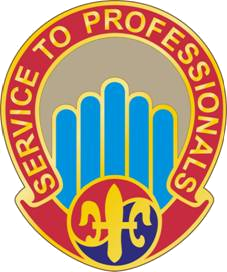
The 2nd Infantry Division/ROK-US Combined Division Sustainment Brigade is a sustainment brigade of the United States Army. It provides logistical support to the 2nd Infantry Division, the Republic of Korea Army's 8th Infantry Division, and all U.S. Army Units garrisoned on the Korean Peninsula. Formerly the 501st Sustainment Brigade, it was reflagged the 2ID SBDE on 7 July 2015 and became a direct reporting unit to the 2nd Infantry Division.

The 464th Tactical Airlift Wing was a theater airlift unit of the United States Air Force during the Cold War. It served in the United States under Tactical Air Command between 1953 and 1971. Its predecessor was the United States Army Air Forces 464th Bombardment Group of World War II.

The Chemical Biological Incident Response Force (CBIRF) is a Marine Corps unit responsible for countering the effects of a chemical, biological, radiological, nuclear, or high-yield explosive (CBRNE) incident, support counter CBRN terrorism, and urban search and rescue when CBRN incident. They were activated in April 1996 by General Charles C. Krulak, then Commandant of the Marine Corps. The unit is based at Naval Support Facility Indian Head in Indian Head, Maryland and falls under the command of the United States Marine Corps Forces Command.

The 197th Infantry Brigade is an active Infantry brigade of the United States Army. The brigade was active as an Organized Reserve unit from 1921 to 1942, in the Regular Army from 1962 to 1991, and as a TRADOC training unit from 2007 to 2013. The brigade saw service in Operation Desert Storm with the 24th Infantry Division. On July 31, 2020, the brigade was activated as a training brigade in Fort Moore, Georgia, to serve the increased training needs of the army.

The 2nd Chemical Battalion is a United States Army chemical unit stationed at Fort Cavazos, Texas, United States, and is part of the 48th Chemical Brigade. The battalion can trace its lineage from the 30th Engineer Regiment and has served in World War I, World War II, Korean War, Operation Desert Storm, and Operation Iraqi Freedom.
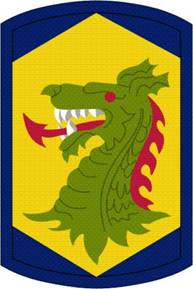
The 404th Maneuver Enhancement Brigade is a maneuver enhancement brigade of the Illinois Army National Guard.
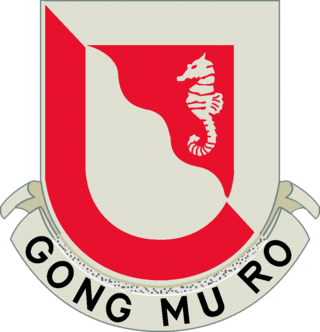
The 14th Brigade Engineer Battalion is a Combat Engineer Battalion of the United States Army based at Joint Base Lewis-McChord, Washington. The battalion is a subordinate unit of the 2nd Stryker Brigade, 2nd Infantry Division, and I Corps. The battalion's official motto is "Gong Mu Ro" and battle cry "Rugged!".
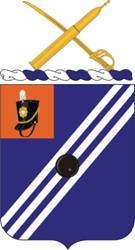
The 76th Field Artillery Regiment is a field artillery regiment of the United States Army. First formed as a cavalry regiment in 1916, the regiment was converted to field artillery in 1917, and served in Europe during World War I with the 3rd Division and as a separate battalion during World War II, as well as in peacetime at Fort Knox, KY, and Fort Devens, MA. Since 1959, the regiment has been a parent regiment under the Combat Arms Regimental System and the U.S. Army Regimental System, with regimental elements serving with the 3rd Infantry Division in Germany and Operation Iraqi Freedom, with the 7th Infantry Division in Korea, and in the Army Reserve. No regimental elements are currently active.
The 377th Field Artillery Regiment is a field artillery regiment of the United States Army. A parent regiment under the U.S. Army Regimental System, the regiment's 2nd Battalion, 377th Field Artillery Regiment is assigned to the 2nd Infantry Brigade Combat Team (Airborne), 11th Airborne Division. Elements of the regiment have also served with the 101st Airborne Division and 82nd Airborne Division, and have seen service in World War II, Vietnam, and in both Iraq and Afghanistan during the Global War on Terror. The 1st and 3rd Battalions as well as Batteries D and E are Inactive.

A maneuver enhancement brigade (MEB) is a self-contained, modular, and multifunctional support brigade of the United States Army customized to meet whatever mission it receives. A MEB's primary purpose is to plug into operational formations commanded by corps or division commanders, to support brigade combat teams once deployed, and to conduct tactical level tasks and support. MEBs can provide command and control for up to seven battalions that are capable of owning battlespace in combat.
The 415th Chemical Brigade is a chemical unit in the United States Army Reserve, located in Greenville, South Carolina.
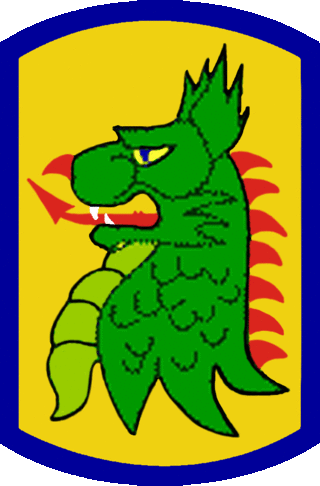
The 455th Chemical Brigade is an NBC defense formation of the United States Army Reserve, active from 2000 to 2007 at Fort Dix. The brigade headquarters deployed to Iraq with the CFLCC and Iraq Survey Group from February 2003 to April 2004. The brigade was reactivated on November 16, 2019.

The 383d Military Intelligence Battalion is an intelligence formation of the United States Army's Military Intelligence Corps, currently part of the U.S. Army Reserve and falling under 505th Military Intelligence Brigade (Theater) since 2015.


















